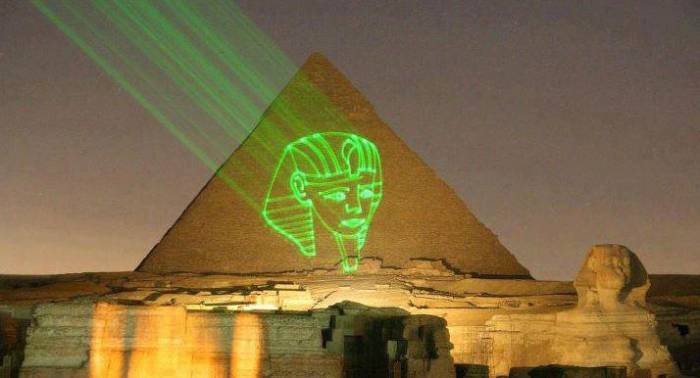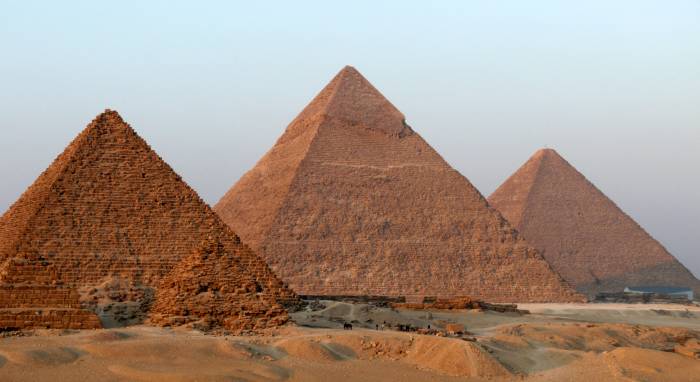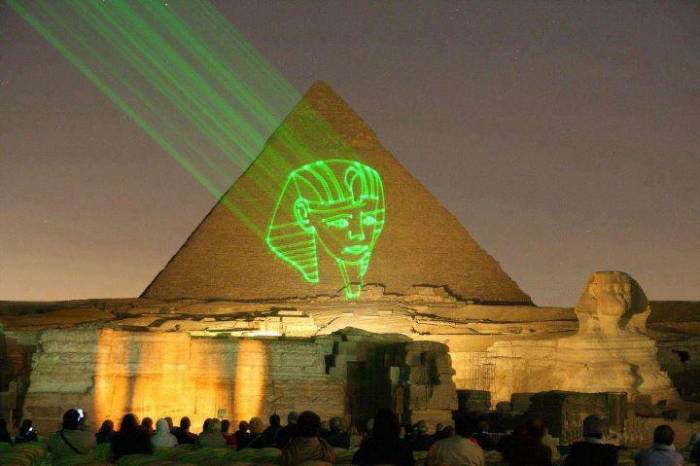
A team of architects and scientists from Egypt, France, Canada, and Japan have been searching for hidden chambers inside the Giza Pyramids. The three pyramids hold the tombs of the pharaohs Khufu, Khafre, and Menkaure. All were built in the Fourth Dynasty from 2613-2494 BC. Using infrared thermography, the international team discovered thermal anomalies within the pyramids.
Three odd places
The team observed the pyramids during sunrise and sunset – the sun heats the limestone exteriors when it rises and cools them when it sets. The infrared thermography helps detect the presence of unknown internal structures and cavities. Thermal cameras found higher temperatures in three adjacent stones at the bottom of the structure where Pharaoh Khufu’s tomb is located, which is the largest pyramid, and is referred to as the Great Pyramid of Giza. The anomalies could be due to the presence of a secret chamber, internal air currents or the existence of a different type of stone. In a statement, the Egyptian antiquities ministry said:
“[The team had] concluded the existence of several thermal anomalies that were observed on all monuments during the heating-up or the cooling-down phases. To explain such anomalies, a lot of hypotheses and possibilities could be drawn up: presence of voids behind the surface, internal air currents.”

{adinserter CNP5}
The Great Pyramid had a particularly big anomaly
The statement from the antiques ministry also says that there is one particularly impressive anomaly found at ground level on the eastern side of the Great Pyramid. “The first row of the pyramid’s stones are all uniform, then we come here and find that there’s a difference in the formation,” Antiquities Minister Mamdouh al-Damati says. More thermal anomalies were found in the upper half of the Great Pyramid. “All anomalies detected and data collected will now be subject to further treatment and data analysis,” the statement says. The Operation Scan Pyramids project, launched under the authority of the Egyptian Ministry of Antiquities and coordinated by the Faculty of Engineering of Cairo and the French HIP Institute, began late October and will continue until the end of next year. The scientific project uses “noninvasive visualization techniques,” such as scans with lasers and drones to see inside the pyramids. The next stage of the project is 3-D modeling and simulations of the Giza plateau. The goal is to use techniques to get concrete results; then the Egyptologists will interpret them. The mission statement of the project says:
“Just because a mystery is 4500 years old doesn’t mean it can’t be solved…”

[interaction id=”5642e28c3073831534263a6e”]
SEE ALSO: Ancient Egyptian Treasures Are About To Be Unveiled.






